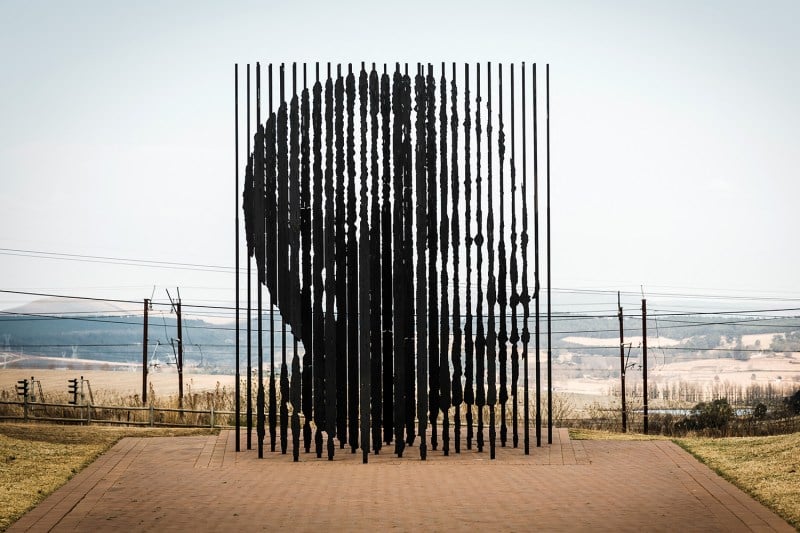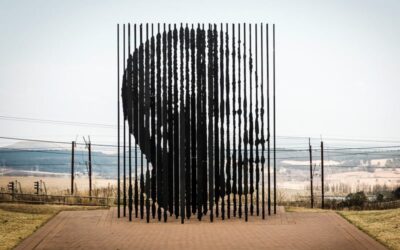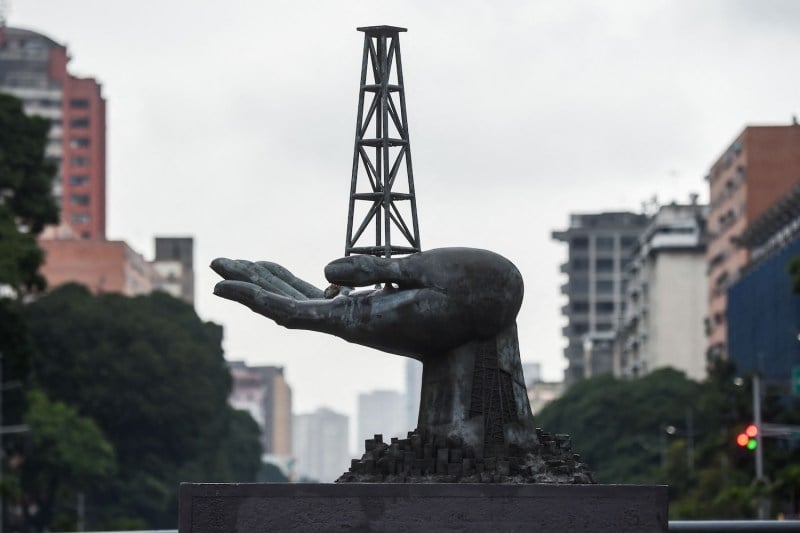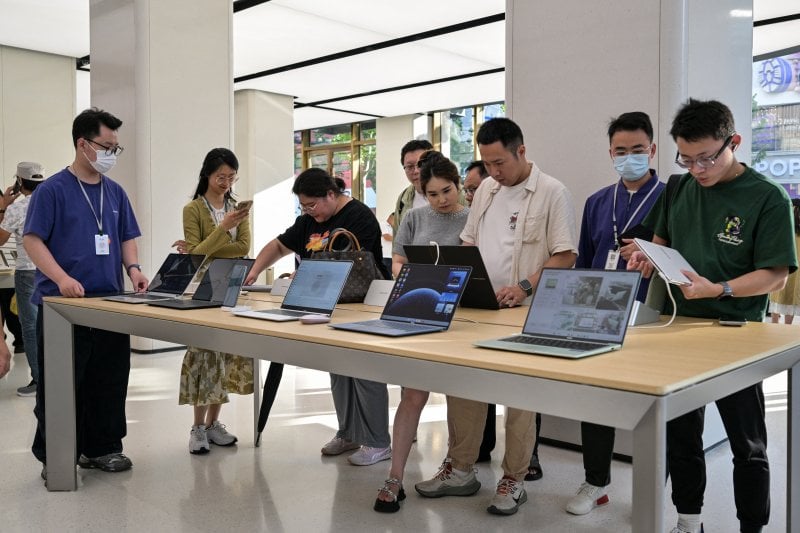What Trump Gets Wrong About South African History

What Trump Gets Wrong About South African History
A deep dive into the country’s efforts to address the legacies of apartheid.
A monument by South African artist Marco Cianfanelli, representing the 27 years former South African President Nelson Mandela spent behind bars, in Howick, South Africa, on Aug. 5, 2018. RAJESH JANTILAL/AFP via Getty Images
At his meeting with South African President Cyril Ramaphosa last week, U.S. President Donald Trump continued to peddle false claims about an alleged “white genocide” in South Africa.
Decades after the end of apartheid, the country’s white minority still holds the vast majority of land. One of Trump’s main grievances with Pretoria is a new law that allows the government to expropriate land in limited circumstances—although no land has been taken under the law yet.
At his meeting with South African President Cyril Ramaphosa last week, U.S. President Donald Trump continued to peddle false claims about an alleged “white genocide” in South Africa.
Decades after the end of apartheid, the country’s white minority still holds the vast majority of land. One of Trump’s main grievances with Pretoria is a new law that allows the government to expropriate land in limited circumstances—although no land has been taken under the law yet.
The act is the latest step in what Michael Albertus has called “one of the most ambitious attempts ever to use land as a tool for deconstructing racial hierarchy.” According to Albertus, the new South African policy is hardly radical—in fact, he writes, one of the “chief complaints of the [ruling African National Congress party’s] record on land reform is that it has not done enough.”
The essays below offer insight into South Africa’s land restitution policies and the country’s ongoing efforts to address the legacy of apartheid.
South African President Cyril Ramaphosa and U.S. President Donald Trump during a meeting at the White House in Washington on May 21.Chip Somodevilla/Getty Images
Trump’s False Fantasy About Afrikaner Land
The U.S. president is fixated on an expropriation policy that isn’t as radical as he thinks, Michael Albertus writes.
U.S. President Donald Trump, accompanied by House Speaker Mike Johnson, talks to the media in Washington on May 20.Andrew Harnik/Getty Images
We Can No Longer Dismiss Trump’s Blatant Racism
The meeting with Ramaphosa marked a reversion to the open racism of U.S. presidents long past, FP’s Howard W. French writes.
A resident walks past a mural of former South African President Nelson Mandela in Soweto, South Africa, on Dec. 7, 2013, two days after his death. CARL DE SOUZA/AFP via Getty Images
No Justice. No Peace.
Post-apartheid South Africa remains steeped in the “rainbow nation” ideals of reconciliation and forgiveness—but it has never truly reckoned with accountability, Sisonke Msimang writes.
Nelson Mandela supporters protest against apartheid in South Africa in 1994. David Turnley/Corbis/VCG via Getty Images
South African History From Above
A sweeping new history of the country focuses primarily on elites, rather than the grassroots movements that overturned apartheid, Richard Pithouse writes.
A worker takes a break in a field near the Kruger National Park in Komatipoort, South Africa, on July 8, 2013. The participation of Black farmers in the sugarcane industry has increased through programs to return land and work to the Black community. Dan Kitwood/Getty Images
The Lessons of South Africa’s Stolen Land
Transfers of territory are central to the country’s efforts at racial reconciliation, Michael Albertus writes.
Chloe Hadavas is a senior editor at Foreign Policy. Bluesky: @hadavas.bsky.social X: @Hadavas
Stories Readers Liked
In Case You Missed It
A selection of paywall-free articles

Four Explanatory Models for Trump’s Chaos
It’s clear that the second Trump administration is aiming for change—not inertia—in U.S. foreign policy.

























Join the Conversation
Commenting is a benefit of a Foreign Policy subscription.
Subscribe
Subscribe
Already a subscriber?
.
View Comments
Join the Conversation
Join the conversation on this and other recent Foreign Policy articles when you subscribe now.
Subscribe
Subscribe
Not your account?
View Comments
Join the Conversation
Please follow our comment guidelines, stay on topic, and be civil, courteous, and respectful of others’ beliefs.
View Comments
Change your username |
Log out
Change your username:
CANCEL
Confirm your username to get started.
The default username below has been generated using the first name and last initial on your FP subscriber account. Usernames may be updated at any time and must not contain inappropriate or offensive language.